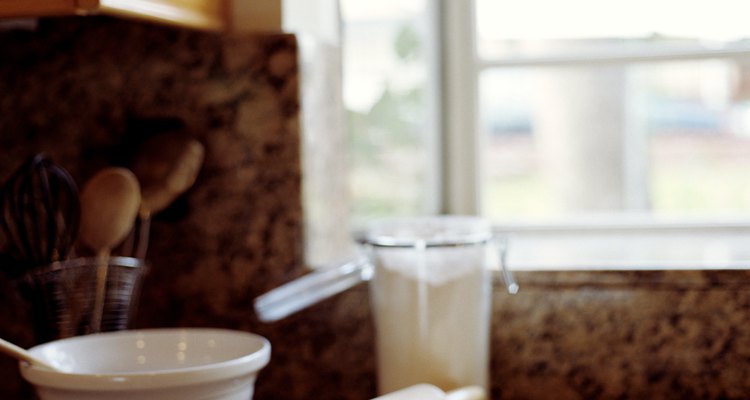
Siri Stafford/DigitalVision/Getty Images
Pie crust is the result of a simple ratio of fat to flour to water. In "Ratio," Michael Ruhlman describes it as 3-2-1 pie dough: 3 parts flour, 2 parts fat, 1 part water. The complexity of a perfect, flaky pie crust comes not from this simple ratio but from the techniques used to combine, handle and bake the pastry. Learning some of these techniques will keep your pie crust from shrinking inside the pan as it blind bakes, or bakes without a filling.
Cold is Best
Gluten, the sticky substance present in wheat flour, is also the substance that makes pastry dough shrink while baking. To keep the gluten at bay, think cold. Use cold butter or shortening whenever possible and keep the flour in the refrigerator too. Run your hands in cold water before handling the dough and pop it in the refrigerator when it starts to feel warm to the touch. At Cake and Spoon bakery in Austin, Texas, chef Melissa Brinckmann freezes her savory tart shells after fitting them into pastry rings to keep them from shrinking.
Handle with Care
Over-handling of the pastry dough is another reason for shrunken pie crust. To prevent a reduced crust, avoid stretching the rolled-out dough as you add it to the tart pan or ring. Instead, lift the dough's edges and let it drop into the pan rather then pushing it into place with your knuckles. For even better results, in "Mastering the Art of French Cooking," Julia Child recommends using a straight-sided cake pan for tart shells instead of a pie pan with sloped sides as a sloped edge encourages the sides of the pastry to slide down.
Blind Baking
When you bake an empty tart shell prior to adding a filling, you are baking the crust blind. Because a wet filling, such as custard, keeps the pastry from baking correctly, blind baking ensures that the pastry will be crisp and flaky. You can also blind bake a shell before adding a cooked filling, such as for lemon meringue pie. To keep the dough from shrinking, dock and weight the shell. Docking involves pressing small holes into the dough that allow steam to escape while the crust bakes. To weight the crust, line the shell with foil or parchment paper and then fill the shell with dried beans, rice or pie weights before baking it in a preheated oven. The weight presses the dough into place and helps prevent it from 'melting' down into the pan.
Tweak the Recipe
Another way to keep the make the pastry dough less elastic is to substitute sour cream for the water in the recipe. In "The Pie and Pastry Bible," Rose Levy Beranbaum recommends sour cream because its acidity helps relax the gluten, resulting in a less elastic dough that shrinks less. She also recommends combining vinegar with the water for the same reason.
Related Articles
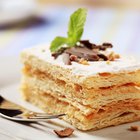
What Is Docking Used for in Baking?
How to Keep a Pie Crust From Bubbling ...

The Best Way to Roll Out Pizza Dough

What Are the Causes of Pie & Pastry ...
What Causes My Cake to Fall When ...

How to Freeze Pavlova
How to Keep Meringue Pie Topping From ...

How to Freeze Brioche

How to Make Cannolis by Baking
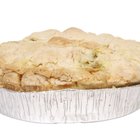
How to Pre-Bake Puff Pastry

How to Care for Pastry Cloths
Can You Refrigerate Homemade Yeast ...
Quick and Easy French Bread Recipe
Does French Bread Stale Quickly Because ...
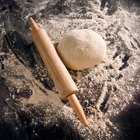
How to Preserve Dough That Has Risen

Softened vs. Melted Butter When Baking

How to Make Bread Chewy
Can You Make a Pie Shell Using Pancake ...
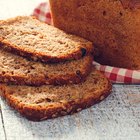
How to Keep Homemade Bread from ...
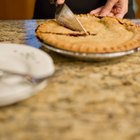
How to Brown a Pie Crust
References
- "Ratio"; Michael Ruhlman; 2009
- "Mastering the Art of French Cooking, Volume One"; Julia Child, Louisette Bertholle, and Simone Beck; 2001
- "The Pie and Pastry Bible"; Rose Levy Beranbaum; 1998
Writer Bio
Susan Brockett worked in the computer industry as a technical writer for nearly 20 years at companies including Motorola and Dell Computer Systems. In addition, her articles have appeared in Society of Technical Communications publications. Brockett has a master's degree in English composition and communications from Kansas State University.
Photo Credits
Siri Stafford/DigitalVision/Getty Images